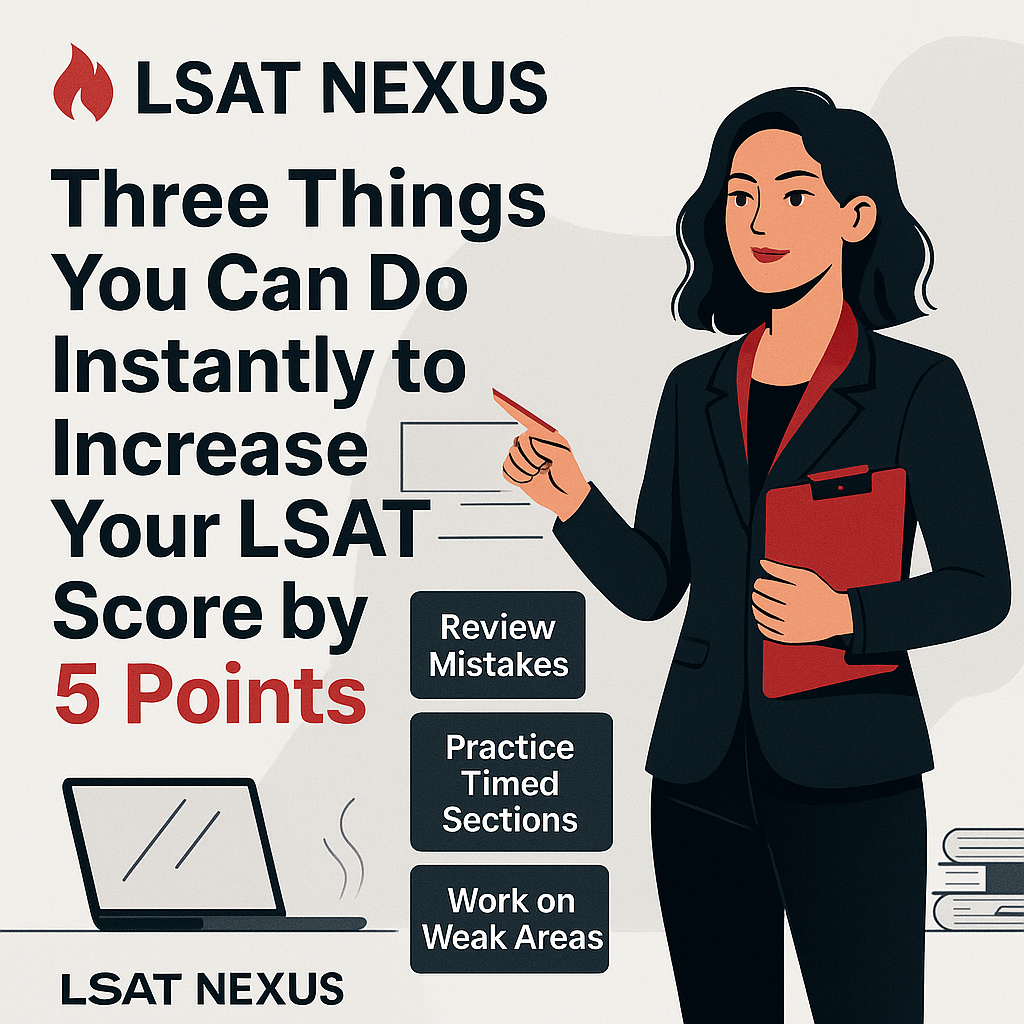
You’re probably:
Here’s how to fix it—all in one week, no new content needed.
If you're trying to increase your LSAT score and you’ve been plateauing, chances are you're making one of three critical mistakes. These aren’t advanced strategies requiring months of prep—these are immediate, practical shifts that can yield a 5-point jump if and only if you implement all three together. Each reinforces the others. Use one or two, and you might not see results. Use all three in tandem? That’s when the score jumps.
Most students sabotage their scores by trying to finish every question in every section, regardless of their skill level or timing. This leads to rushed answers, panicked guesses, and a complete abandonment of logical process by the second half of the section.
Instead:
Yes, that means leaving questions blank intentionally. But here’s the truth: you will score higher when you slow down and actually get more questions right. Rushing through the final stretch guarantees careless errors and guesses. Prioritize accuracy and control, not completeness.
Example: One of my students was stuck at 160 for two months. He applied these three shifts, left 4 LR questions blank, guessed D on each, and scored a 166 the next week.
If you’re not answering a question strategically, then you’re guessing. And if you're guessing, guess smart. That means guessing the same letter every time.
Why?
So pick a letter—any letter—and stick with it.
Strategy Outcome Table:
Time is your most precious resource on the LSAT. If you spend more than two minutes on any single question, research and real-world data overwhelmingly show you’re likely to get it wrong anyway.
Plus, that time has a ripple effect: the extra 30–60 seconds you wasted are seconds you now don’t have for later questions—ones you probably could have gotten right.
Set a hard two-minute limit per question. If you’re not close by then, flag it and move on. You’re not quitting—you’re maximizing your point potential across the section.
These three rules work because they synergize. Skipping hard questions keeps you focused and confident. Guessing the same letter protects your odds. And time limits force smart pacing.
Together, they create a disciplined, aggressive strategy that converts prep into points. But drop even one, and the whole system cracks.
Apply all three starting today. You could be five points higher by next week.
Book a free LSAT strategy call and I’ll help you build a custom plan using these principles—tailored to your current timing, section weaknesses, and target score.
Click here to book your call →